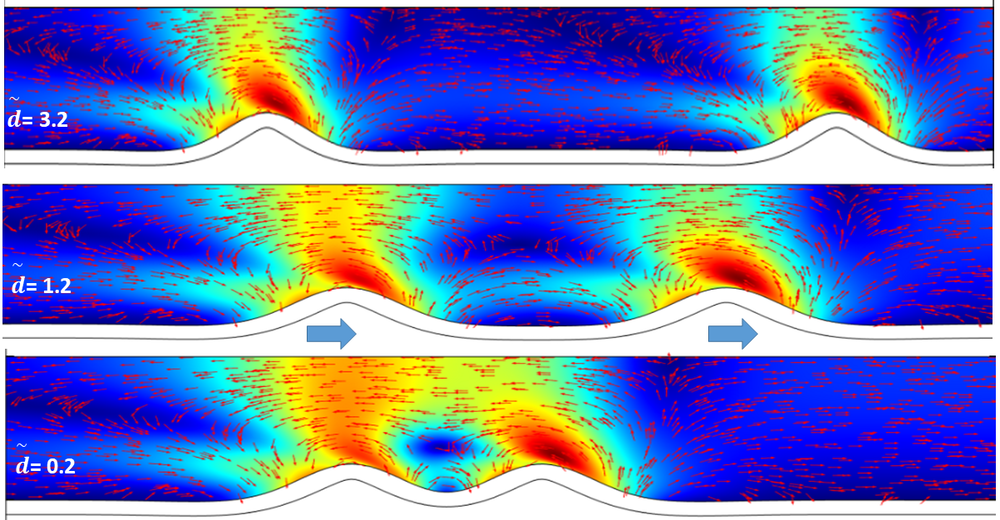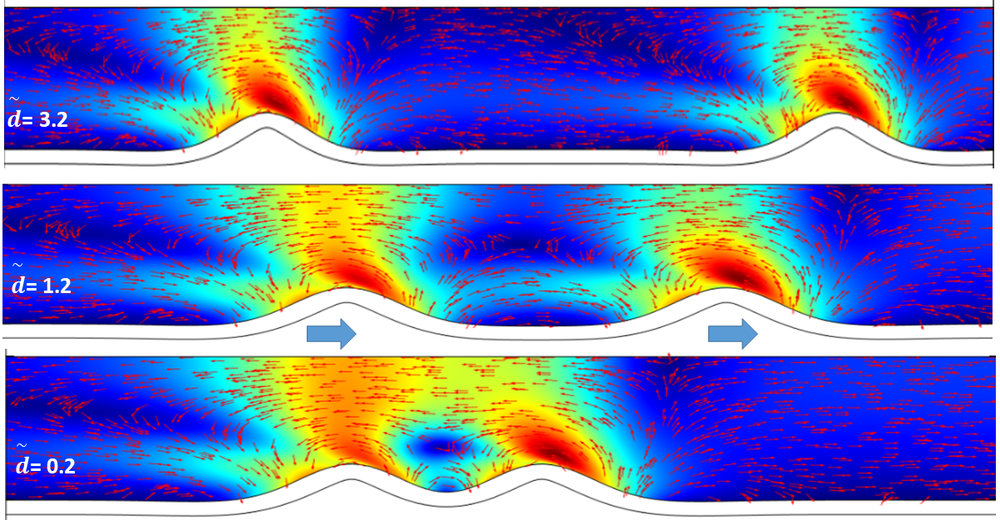Intestinal Waves Move Food To and Fro
Videos of active intestines extracted from a chicken and a mouse show new details of the process by which waves of contraction move food through the digestive tract [1]. Researchers observed a previously predicted back-and-forth motion of the material in the intestine in response to each wave and also recorded wave collisions that caused material to squirt forward at high speed. The experiments and related theoretical models may improve researchers’ understanding of other structures that make use of contractile waves, such as the fallopian tubes and the esophagus.
There have been many theoretical and experimental studies of contractile waves, but Richard Amedzrovi Agbesi and Nicolas Chevalier of Paris City University were able to see new features of the process by using translucent intestines extracted from animal embryos. In addition, “The contractile wave patterns in the embryonic gut are simple and well defined,” says Amedzrovi Agbesi. These properties enabled the pair to accurately characterize the fluid-wave interactions.
One video shows a steady stream of contractile waves moving in both directions through a mouse gut that has been unfurled and connected with tubes at each end to allow fluid to flow through. A close-up view shows that a solid “bolus” of bile salts within the fluid moves slowly forward but is periodically pushed slightly backward as each wave passes around it. This cyclic “reflux” motion was previously predicted based on simulations but has not been seen in experiments.
Amedzrovi Agbesi and Chevalier’s simulations suggested that this reflux helps to mix the fluids in the intestine and to provide the rapid fluid motion that favors absorption of nutrients at the intestine walls. The new model also showed that the spacing between consecutive contractile waves in most animals is optimized to maximize reflux.
A second video shows silicone oil (acting as the bolus) that has been injected into an embryonic chicken intestine. Two counterpropagating waves move toward one another and collide. The intestine rapidly squeezes at the collision point, ejecting the bolus at 35 times the wave speed (though it doesn’t go far). The simulations suggested that, again, the high speed is useful for mixing and for favoring nutrient absorption.
–David Ehrenstein
David Ehrenstein is a Senior Editor for Physics Magazine.
References
- R. J. Amedzrovi Agbesi and N. R. Chevalier, “Flow and mixing induced by single, colinear, and colliding contractile waves in the intestine,” Phys. Rev. Fluids 7, 043101 (2022).





